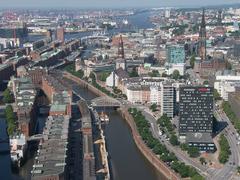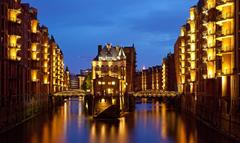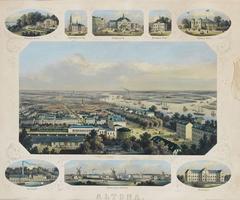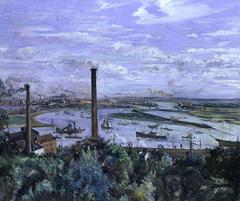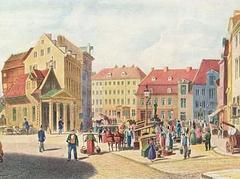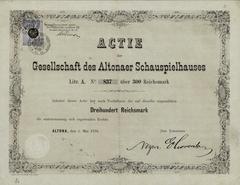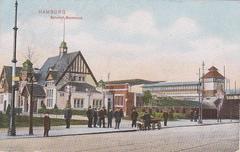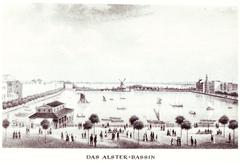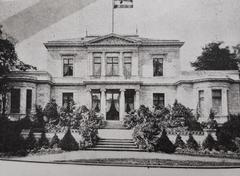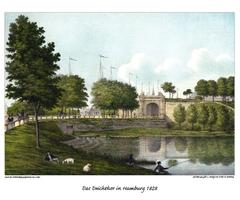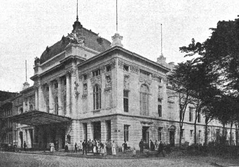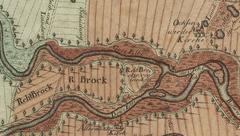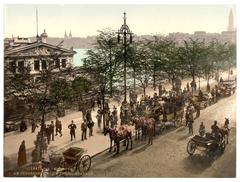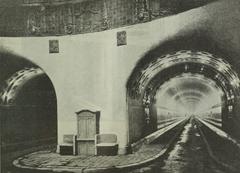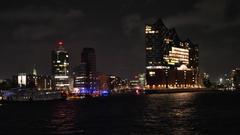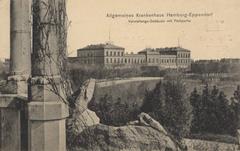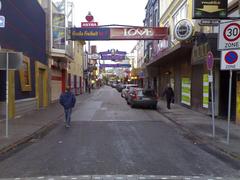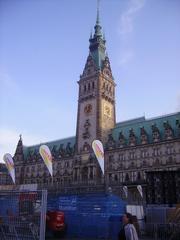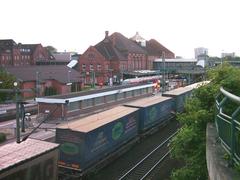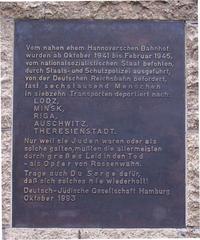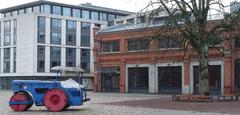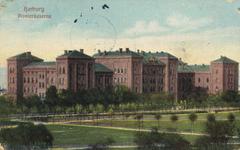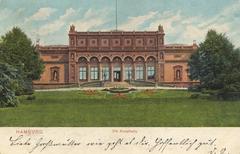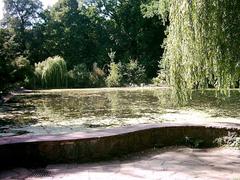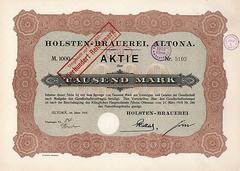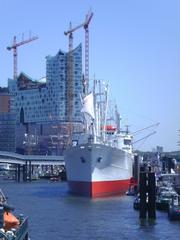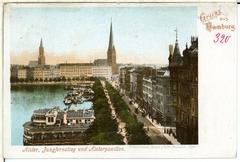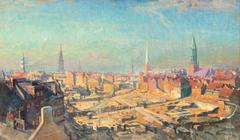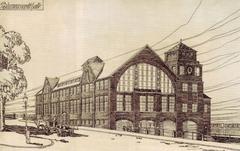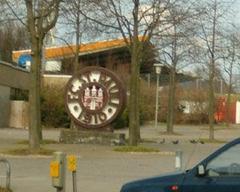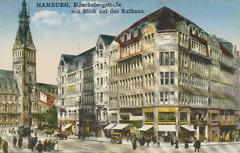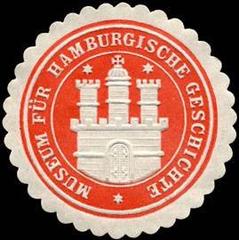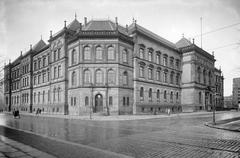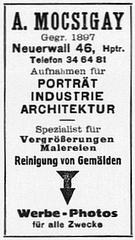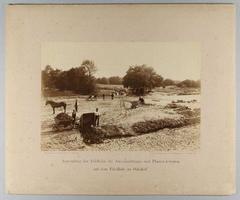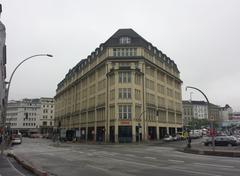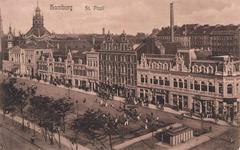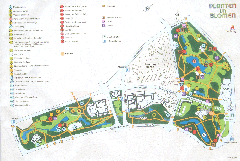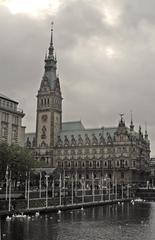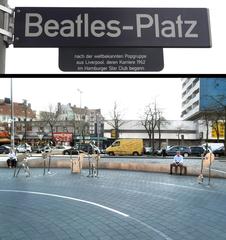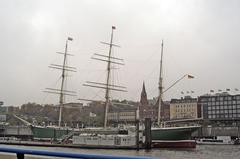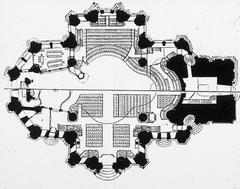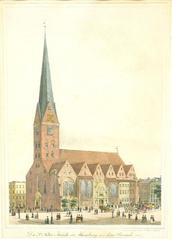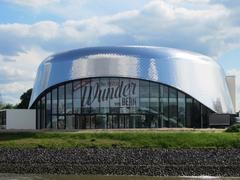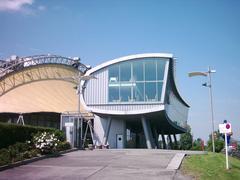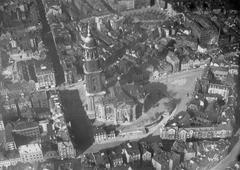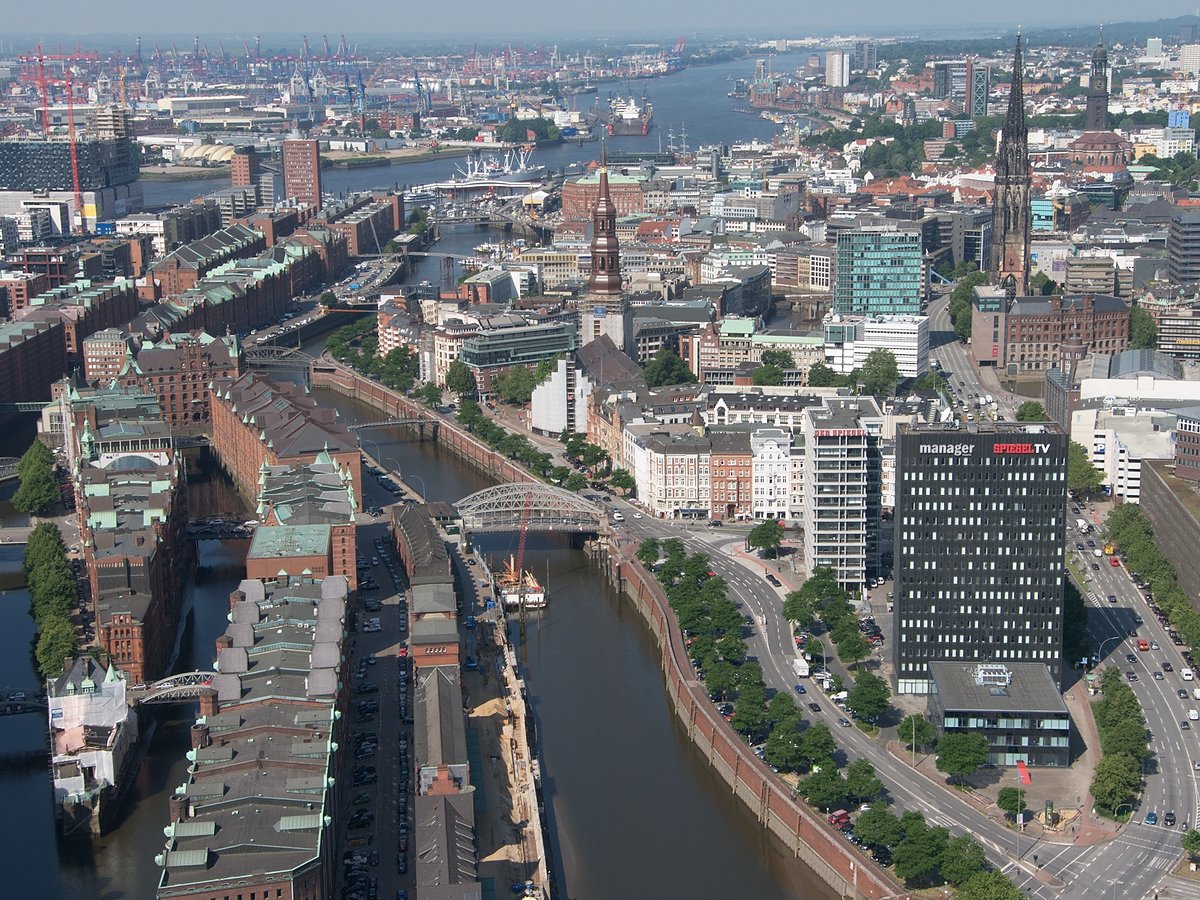
Parkhaus Speicherstadt Visiting Hours, Tickets, and Historical Sites in Hamburg
Publication Date: 01/08/2024
Introduction to Parkhaus Speicherstadt
The Speicherstadt in Hamburg, Germany, is a historic warehouse district renowned for its stunning neo-Gothic architecture, intricate network of canals, and rich history. Designated as a UNESCO World Heritage Site in 2015, it offers visitors a unique blend of historical significance and modern attractions (source). Built between 1885 and 1927, the Speicherstadt spans 1.1 kilometers and is situated on artificial islands in the Elbe River (source). Originally constructed to serve as a customs-free zone, it played a crucial role in facilitating Hamburg’s status as a major trading hub. The district’s warehouses were designed to store high-value goods such as coffee, tea, spices, and tobacco, contributing significantly to the city’s economic growth (source). Today, while its original function has diminished, the Speicherstadt has been transformed into a vibrant cultural and tourist destination, hosting numerous museums, cafes, restaurants, and residential spaces. Notable attractions include the Miniatur Wunderland and the International Maritime Museum, which continue to draw visitors from around the world (source). This guide provides a comprehensive overview of the Speicherstadt, covering its historical and architectural significance, visitor information, and travel tips to help you make the most of your visit.
Table of Contents
- Introduction
- Origins and Development
- Architectural Significance
- Economic Impact
- UNESCO World Heritage Status
- Transformation and Modern Use
- Cultural and Social Impact
- Visitor Experience
- Special Events and Guided Tours
- Preservation Efforts
- FAQ
- Conclusion
Speicherstadt Hamburg: Visiting Hours, Tickets, and Historical Significance
Introduction
The Speicherstadt in Hamburg, Germany, is a historic warehouse district that captivates visitors with its neo-Gothic architecture, rich history, and vibrant cultural scene. Designated as a UNESCO World Heritage Site, the Speicherstadt offers a unique blend of historical significance and modern attractions. This article explores the district’s origins, architectural marvels, economic impact, and practical visitor information, including visiting hours, ticket prices, and travel tips.
Origins and Development
The history of the Speicherstadt dates back to the late 19th century. Construction began in 1883 as part of Hamburg’s efforts to expand its customs-free zone, bolstering its status as a major trading hub. By 1888, the first phase was completed, marking the beginning of its storied history (source).
Architectural Significance
Renowned for its neo-Gothic architecture, the Speicherstadt features rows of red-brick warehouses towering over waterways. These buildings were constructed on artificial islands supported by oak pilings driven into the muddy ground of the Elbe River, maintaining its customs-free status (source).
Economic Impact
The Speicherstadt played a crucial role in Hamburg’s economy for decades. As a customs-free zone, it facilitated the import and storage of high-value goods like coffee, tea, spices, and tobacco. Specialized facilities ensured the quality of these goods before distribution across Europe, making Hamburg a pivotal node in global trade networks (source).
UNESCO World Heritage Status
In 2015, the Speicherstadt was designated a UNESCO World Heritage Site, highlighting its historical and architectural significance. This recognition has helped preserve its heritage, ensuring the maintenance of its iconic buildings and waterways for future generations (source).
Transformation and Modern Use
Although its original function as a warehouse district has diminished, many of the old warehouses have been repurposed into museums, cafes, restaurants, and residential spaces. This transformation has turned the Speicherstadt into a vibrant cultural and tourist destination. Notable attractions include the Miniatur Wunderland and the International Maritime Museum (source).
Cultural and Social Impact
The Speicherstadt is a symbol of Hamburg’s rich cultural heritage. Its unique atmosphere offers a glimpse into the city’s past and serves as a venue for various cultural events and activities. The Speicherstadtmuseum provides interactive exhibits that allow visitors to experience the district’s history firsthand (source).
Visitor Experience
Visitors can explore the Speicherstadt on foot or by boat. Walking tours offer an intimate look at its architecture and history, while boat tours provide a unique perspective from the waterways. Proximity to the modern HafenCity district allows visitors to experience the contrast between Hamburg’s historic and contemporary landscapes. Key highlights include the Elbphilharmonie, a striking concert hall with a viewing terrace offering panoramic views of the city and harbor (source).
Visitor Information
- Visiting Hours: Most attractions in the Speicherstadt are open from 10 AM to 6 PM. However, specific hours may vary, so it’s advisable to check ahead.
- Tickets: Prices vary depending on the attraction. The Miniatur Wunderland, for example, charges around €15 for adults and €7.50 for children.
- Travel Tips: Wear comfortable walking shoes and consider using public transport to reach the Speicherstadt. The area is well-connected by bus and metro.
- Nearby Attractions: Don’t miss the HafenCity district and the Elbphilharmonie.
- Accessibility: Many attractions are wheelchair accessible, but it’s best to check in advance.
Special Events and Guided Tours
The Speicherstadt hosts various special events throughout the year, from light festivals to historical reenactments. Guided tours are available, offering in-depth insights into the district’s history and architecture. Photography enthusiasts will find numerous picturesque spots, especially along the canals at sunset.
Preservation Efforts
UNESCO designation has spurred efforts to preserve the Speicherstadt’s historic buildings and infrastructure. Restoration projects maintain the structural integrity and aesthetic appeal of the warehouses, safeguarding its legacy for future generations (source).
FAQ
- What are the Speicherstadt visiting hours? Most attractions are open from 10 AM to 6 PM.
- How much do tickets cost? Prices vary; for example, Miniatur Wunderland charges around €15 for adults.
- Is the Speicherstadt accessible by public transport? Yes, it is well-connected by bus and metro.
Conclusion
The Speicherstadt is a remarkable example of how historical heritage can be preserved and repurposed for modern use. Its transformation from a bustling warehouse district to a vibrant tourist destination underscores its enduring significance in Hamburg’s history. As a UNESCO World Heritage Site, the Speicherstadt continues to captivate visitors with its unique blend of history, architecture, and culture. Make sure to explore this iconic district when visiting Hamburg.
Call to Action
Planning a trip to Hamburg? Download our mobile app Audiala for more travel tips and updates. Don’t forget to check out our other related posts and follow us on social media for the latest travel news and insights.
History of Speicherstadt
Construction and Development
The Speicherstadt in Hamburg, Germany, is the world’s largest continuous warehouse complex, built between 1885 and 1927 by the ‘Hamburger Freihafen-Lagerhaus-Gesellschaft’ (HFLG). This architectural marvel spans 1.1 kilometers and is situated on a group of islands in the Elbe River. The construction was carried out in three phases, with the first phase completed in 1888, the second in 1898, and the final phase in 1927. The warehouses were designed to facilitate the storage and handling of imported goods such as coffee, tea, cocoa, spices, and tobacco (source).
Post-War Reconstruction
During World War II, the Speicherstadt suffered significant damage. However, the post-war reconstruction efforts between 1949 and 1967 aimed to restore the warehouses to their original neo-Gothic design. This meticulous restoration has preserved the historical and architectural integrity of the district, making it a significant part of Hamburg’s cityscape (source).
UNESCO World Heritage Site
In 2015, the Speicherstadt, along with the adjacent Kontorhausviertel and Chilehaus, was designated a UNESCO World Heritage Site. This recognition underscores the district’s architectural and historical significance, highlighting its role in Hamburg’s development as a major international trading hub (source).
Architectural Significance
Neo-Gothic Design
The Speicherstadt is renowned for its uniform neo-Gothic architectural style, characterized by red-brick facades, pointed arches, and decorative gables. This design not only provides an aesthetic appeal but also reflects the functional requirements of a warehouse district. The buildings are equipped with advanced technical facilities for their time, including storage hatches and heavy hooks for moving goods between floors (source).
Bridges and Canals
The district is interwoven with a network of canals and bridges, adding to its unique charm. Notable bridges include the Brooksbrücke, which originally featured a neo-Gothic bridge gate marking the border of the Free Port area. Although the gate was damaged during the war, the bridge remains a significant historical landmark (source).
Visitor Tips
Guided Tours
To fully appreciate the history and architecture of the Speicherstadt, consider joining a guided tour. Several options are available, including a 2-hour tour that covers both the Speicherstadt and the modern HafenCity area. These tours are led by knowledgeable local guides who provide insights into the district’s maritime heritage and architectural marvels (source).
Speicherstadt Museum
Located in Block L, the Speicherstadt Museum offers a glimpse into the district’s past. The museum showcases how goods were handled and traded, with exhibits on the storage of coffee, tea, and other commodities. It also features historical artifacts such as the Schottsche Karre, a cart used for transporting goods within the city (source).
Photo Spots
For photography enthusiasts, the Speicherstadt offers several iconic spots. The Wasserschloss and Fleetschlösschen are popular photo motifs, especially at dusk when the historic brick buildings are illuminated, creating a romantic atmosphere. The Kontorhaus district, with its architecturally significant Chilehaus, also offers excellent photo opportunities (source).
Transportation
The Speicherstadt is easily accessible by various modes of transportation. Bicycles, cars, and buses navigate through the district, while tourist ships offer canal tours. For a more immersive experience, consider exploring the area on foot to fully appreciate the intricate details of the warehouses and bridges (source).
Cultural Insights
Maritime Heritage
The Speicherstadt’s maritime heritage is a testament to Hamburg’s historical role as a major trading hub. The district’s warehouses once stored vast quantities of imported goods, contributing to the city’s economic growth. Today, the Speicherstadt continues to reflect this rich history, with many of its buildings repurposed for modern use while retaining their historical charm (source).
Modern Adaptations
In recent years, several warehouse blocks have been converted into office buildings, blending the old with the new. This transformation is particularly evident in the HafenCity area, a new district established in 2008 that is still under development. The juxtaposition of historic warehouses with modern architecture creates a dynamic urban landscape that attracts both locals and tourists (source).
Culinary Experiences
The Speicherstadt is also home to various gastronomic establishments. Many historic buildings now house restaurants and cafes, offering a range of culinary delights. Visitors can enjoy a meal while soaking in the ambiance of the historic district, making for a memorable dining experience (source).
Practical Information
Opening Hours and Accessibility
The Speicherstadt Museum is open from Tuesday to Friday, 10 a.m. to 5 p.m. The World Heritage Info Point at Chilehaus B is open Monday to Friday, 10 a.m. to 3 p.m. These facilities provide valuable information and resources for visitors looking to explore the district (source).
Hamburg Card
For tourists, the Hamburg Card offers free travel by bus, train, and harbor ferries, along with discounts on over 150 activities, attractions, and restaurants. This card can be purchased online, at tourist information centers, hotels, or ticket machines, making it a convenient option for exploring the city (source).
Nearby Attractions
In addition to the Speicherstadt, visitors can explore nearby attractions such as the Miniatur Wunderland, St. Katharinen Church, and Spicy’s Gewürzmuseum. These sites offer additional insights into Hamburg’s cultural and historical landscape, enriching the overall visitor experience (source).
Special Events
Throughout the year, the Speicherstadt hosts various events that highlight its cultural and historical significance. From light shows to themed tours, these events offer unique ways to experience the district. Check local listings or the official Hamburg tourism website for up-to-date information on upcoming events (source).
Frequently Asked Questions (FAQ)
What are the Speicherstadt visiting hours?
Most of the Speicherstadt can be explored at any time, but specific attractions like the Speicherstadt Museum have set hours. The museum is open from Tuesday to Friday, 10 a.m. to 5 p.m.
How much do tickets for Speicherstadt attractions cost?
Ticket prices vary depending on the attraction. For example, the Speicherstadt Museum charges a small admission fee, while some guided tours may have different pricing. It’s best to check the official websites for the most accurate and up-to-date information.
How do I get to Speicherstadt?
The Speicherstadt is easily accessible by public transportation, including buses and trains. The Hamburg Card can be a convenient option for unlimited travel within the city.
Are there guided tours available?
Yes, several guided tours are available that cover both the Speicherstadt and the HafenCity area. These tours are led by knowledgeable local guides and offer deep insights into the district’s history and architecture.
Conclusion
By following these tips and exploring the various facets of the Speicherstadt, visitors can gain a deeper appreciation for this unique and historically significant district in Hamburg. Don’t forget to download the Audiala app, check out related posts, and follow us on social media for more updates!
Summary and Key Points
The Speicherstadt stands as a remarkable testament to Hamburg’s rich historical and architectural heritage. Its transformation from a bustling warehouse district to a vibrant tourist destination underscores its enduring significance in the city’s history. As a UNESCO World Heritage Site, the Speicherstadt continues to captivate visitors with its unique blend of history, architecture, and culture. Whether you’re exploring its cobbled streets on foot, cruising through its canals by boat, or diving into its cultural attractions, the Speicherstadt offers an immersive experience that appeals to history buffs, architecture enthusiasts, and casual tourists alike. With its preserved buildings, interactive museums, and a dynamic mix of modern and historical elements, the Speicherstadt remains an essential part of Hamburg’s urban landscape. Planning a trip to this iconic district promises a rich and memorable journey through Hamburg’s past and present (source). Don’t forget to download our mobile app Audiala for more travel tips and updates, and follow us on social media for the latest travel news and insights.
References and Sources
- German Girl in America. (n.d.). The Speicherstadt Hamburg. Retrieved from source
- World Heritage Hamburg. (n.d.). Speicherstadt. Retrieved from source
- Hamburg Travel. (n.d.). Speicherstadtmuseum. Retrieved from source
- Home is Where Your Bag Is. (n.d.). Hamburg’s HafenCity and Speicherstadt. Retrieved from source
